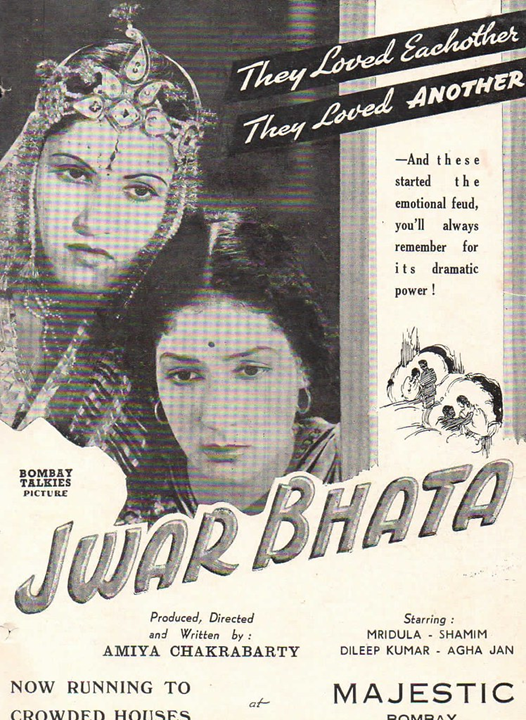
Classic pulp fiction influenced English reading Indians so much that in the iconic song “Mere Sapno Ki Rani Kab Ayegi Tu” you can see Sharmila Tagore ignoring Rajesh Khanna by burying her head in Alistair Maclean’s “When Eight Bells Toll”
A 🧵on this genre by @nandyellidli
A 🧵on this genre by @nandyellidli

"Pulp fiction" is a term used to describe a genre of writing, predominantly across America in the early 1900s. The writing covered horror, sci-fi, detective, and war stories with larger than life characters.
These are all the ingredients that Indian film makers like!
These are all the ingredients that Indian film makers like!

A direct influence of pulp can be seen in another film “Shalimar”. An Indo-US production, Shalimar is inspired by Chase’s “The Vulture is a Patient Bird”.
The filmmakers have never admitted to this!

The filmmakers have never admitted to this!


That said, some film directors have acknowledged their source of inspiration. For example Sriram Raghavan’s Johnny Gaddar is loosely based on “Knock Knock Who’s There” 



Vijay Anand has also acknowledged using scenarios from Chase books in movies such as “Jewel Thief” and “Bullet”. 



Of all the pulp writers, James Hadley Chase probably holds a very special place. The influence of Chase novels in Bollywood is so heavy that fans have connected the following movies to the books: 

Lady Here's Your Wreath (1940) - Mem Saab (1971)
Tiger By The Tail ('54) - Kashmakash ('73), Akalmand ('84), 88 Antop Hill (2004)
The Sucker Punch ('54) - Aar Ya Paar ('94)
There Is Always A Price Tag ('56) - Maharathi ('98)
Shock Treatment ('59) - Joshila ('73)
Tiger By The Tail ('54) - Kashmakash ('73), Akalmand ('84), 88 Antop Hill (2004)
The Sucker Punch ('54) - Aar Ya Paar ('94)
There Is Always A Price Tag ('56) - Maharathi ('98)
Shock Treatment ('59) - Joshila ('73)
One Bright Summer Morning ('63) - 36 Ghante ('74)
The Vulture Is A Patient Bird ('69) - Shalimar ('78)
There's A Hippie On The Highway ('70) - Victoria No 203 ('72, 2007)
Yes! the list is realllllllly long! Do reach out to
@nandyellidli for more!
The Vulture Is A Patient Bird ('69) - Shalimar ('78)
There's A Hippie On The Highway ('70) - Victoria No 203 ('72, 2007)
Yes! the list is realllllllly long! Do reach out to
@nandyellidli for more!
While there is no definitive date on when pulp fiction entered India, almost all Indian languages seemed to have embraced this genre with Bengali, Hindi, Kannada,Malayalam, and Tamil being at the forefront. 

These novels provided a window to the western world to middle class India at a time when there was no television.
It is no exaggeration to say that these books played a role in inculcating English reading habits among many Indians.
It is no exaggeration to say that these books played a role in inculcating English reading habits among many Indians.
Some books were written by the same authors like James Hadley Chase and Alistair MacLean. Many others were based on one primary character like Nick Carter and Earl Stanley Gardner. The latter were written by a myriad of ghost authors aiming to get their first break in writing. 

Pulp also acted as a travelogue since these books were set in far flung places like New York, London, Manchester, Chicago, The Arctic , Islands in the Pacific. It also helped that the books had some titillating “scenes” for the young and old reader alike.
Why some authors became popular in India and others didn’t is a mystery. One reason might be that some pulp fiction novels became instant super hit movies that your parents loved. Guns of Navarone, anyone? 

Another reason could be that some pulp fiction books were officially “banned” (For eg., No Orchids for Miss Blandish) and that created more curiosity. #StreisandEffect FTW 



Most of these books in English were actually printed abroad and were sold in news stands all over India. The beautiful/sultry/exciting/titillating (however one wants to call it) covers on these paperbacks certainly helped a lot of the sales!
A curious sales strategy was also at play during the peak of the pulp phenomenon. When one publisher released a book with a racy cover page, another would release the same book with a sanskari cover page. 







The popularity of these books convinced publishers and writers in other Indian languages to start pulp fiction. These were massive successes, especially selling out at railway stations and bus stations across India.
The unofficial translations soon gave way to original stories set in India. In fact, writers in Konkani started writing pulp fiction inspired by other language successes! 

Surendra Kumar Pathak in Hindi, Hemender Kumar Roy in Bengali, Mathew Mattam in Malayalam, Rajesh Kumar in Tamil and N.Narsimhaiah in Kannada are some of the most famous writers in Indian languages. Collectively, these authors have published close to 2000 pulp fiction novels! 



Most of the pulps produced in India followed the same themes as their western counterparts but with local flavours. The mini skirt was replaced by a chiffon saree, the cigar smoking detective was replaced by a Charminar smoking ex-military man, a fiat replaced an Aston Martin. 

More importantly, the by-lanes of London/New York/Chicago were replaced by the gullies and monuments of Bangalore, Patna, Meerut, Delhi and Bombay. This gave the readers a feeling that the stories were panning out in their own surroundings.
Once again, these pulp fiction novels had killer cover pages.
The cover pages evolved from being hand illustrations like old movie posters, to Eastman colour photographs, to graphic loaded designs.
The cover pages evolved from being hand illustrations like old movie posters, to Eastman colour photographs, to graphic loaded designs.

Recently, a few Indian publishers like @blaftness and @AlephBookCo have tried to bring back the excitement of Indian Pulp fiction to English readers by publishing anthologies of translated works like Anthology of Tamil pulp fiction, and anthology of Bengali Pulp 

In conclusion, pulp fiction in genral and Indian pulp fiction in particular is rich and interesting. Fortunately, people at @blaftness and @AlephBookCo are trying to revive this by translating some good works.
Here’s to Pulp Fiction forever!!
Here’s to Pulp Fiction forever!!
Many thanks once again to @nandyellidli who also shared many photos for this tweet thread from his personal collection.
Feel free to DM him for recommendations, book loans, and/or book exchange!
Feel free to DM him for recommendations, book loans, and/or book exchange!
• • •
Missing some Tweet in this thread? You can try to
force a refresh



















